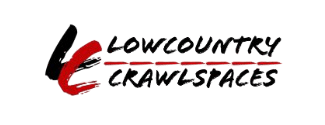DIY Mold Prevention Solutions for Your Home
In the battle against mold, prevention is our most powerful weapon. Mold growth in homes not only poses significant health risks but can also lead to substantial damage to structures and furnishings. Fortunately, safeguarding your home against this unwelcome guest does not always require professional intervention. Simple, do-it-yourself (DIY) strategies can be remarkably effective in preventing mold growth, ensuring a healthier living environment for you and your family.
This blog explores practical and straightforward DIY approaches to mold prevention, emphasizing the importance of maintaining an environment that is less conducive to mold growth. From optimizing ventilation to controlling humidity levels, we will delve into easy-to-implement tactics that can make a significant difference in your home's susceptibility to mold. Whether you're living in a humid climate or simply looking to bolster your home's defenses against mold, these strategies are designed to be accessible to everyone, regardless of their DIY experience.
By understanding the conditions that foster mold growth and applying these preventive measures, homeowners can take proactive steps to protect their homes and health. Join us as we uncover the power of simple DIY strategies in the fight against mold, providing you with the knowledge and tools needed to maintain a mold-free environment.
Understanding Mold and Its Causes
Mold is a common issue that many homeowners face, but understanding what it is and why it grows can be the first step in effective prevention and management. This section of our blog aims to demystify mold, exploring its basic characteristics, the conditions that foster its growth, and the risks it poses to both health and home structures.
What is Mold and Why Does It Grow in Homes?
Mold is a type of fungus that consists of small organisms found almost everywhere. It can be black, white, orange, green, or purple and thrives in moist environments. Mold reproduces through tiny, lightweight spores that travel through the air. In homes, mold is commonly found in damp, humid areas such as basements, bathrooms, and kitchens.
Common Types of Mold in Homes: Some of the most common types include Cladosporium, Penicillium, Aspergillus, and Stachybotrys chartarum (often referred to as black mold). Each type has its preferences for where and how it grows, but all require moisture to flourish.
Conditions Leading to Mold Growth: The primary condition for mold growth is moisture. High humidity levels, water leaks, condensation, or poor ventilation can all create environments conducive to mold. Understanding and controlling these conditions are crucial for preventing mold growth in homes.
Health and Structural Risks of Mold
Mold is not just a cosmetic issue; it poses significant health and structural risks. Being informed about these risks can help homeowners take mold growth seriously and take prompt action.
Health Risks Associated with Mold Exposure: Exposure to mold can cause a variety of health issues, ranging from mild allergic reactions like sneezing and coughing to more severe respiratory problems. People with asthma or allergies may be more sensitive, but mold can affect anyone, especially with prolonged exposure.
Impact on Home Structures and Property Value: Beyond health risks, mold can cause significant damage to home structures. It can weaken floors, walls, and ceilings by breaking down the materials they are made of. Additionally, the presence of mold can significantly decrease a property's value and attractiveness to potential buyers.
Understanding mold and its causes is the first step in creating a safe, healthy living environment. By controlling moisture and humidity, homeowners can prevent mold growth, protecting both their health and their homes.
DIY Strategies for Reducing Indoor Humidity
High indoor humidity can lead to a host of problems, from mold growth to increased allergens and uncomfortable living conditions. Fortunately, there are several do-it-yourself strategies that homeowners can employ to effectively reduce humidity levels in their homes. This section focuses on practical ventilation techniques and the use of dehumidifiers and air conditioners to maintain a comfortable and healthy indoor environment.
Ventilation Techniques
Proper ventilation is key to controlling indoor humidity, especially in areas of your home that are prone to moisture, such as bathrooms and kitchens.
Improving Air Circulation: Simple actions like keeping interior doors open, using ceiling or standing fans, and strategically opening windows can significantly improve air circulation, helping to reduce moisture levels.
Exhaust Fans and Windows: Use exhaust fans during and after activities that produce a lot of moisture, such as cooking and showering. These fans are specifically designed to vent humid air to the outside. Opening windows when the weather permits can also help by allowing dry outside air to replace the humid indoor air, especially in areas like kitchens and bathrooms where moisture accumulates quickly.
Using Dehumidifiers and Air Conditioners
Dehumidifiers and air conditioners are powerful tools for reducing indoor humidity, each working in different ways to help maintain a comfortable environment.
- Dehumidifiers: These devices remove moisture from the air, making them ideal for use in damp areas of your home, such as basements. For effective use, place dehumidifiers in areas where humidity levels are consistently high, and ensure to empty the water reservoir regularly. Consider a unit with a humidistat, which allows you to set your desired humidity level automatically.
- Air Conditioners: Besides cooling your home, air conditioners also remove moisture from the air. To use an air conditioner effectively for humidity control, make sure it is properly sized for your space. An oversized unit will cool the room quickly but without adequately removing humidity, leading to a damp, clammy feeling. Regular maintenance, such as cleaning or replacing the air filter, ensures your air conditioner operates efficiently.
Maintenance and Optimal Settings: Regularly clean or replace filters in both dehumidifiers and air conditioners to maintain efficiency. For dehumidifiers, a setting between 30% and 50% humidity is generally recommended for comfort and health. For air conditioners, using the "auto" mode allows the system to control cooling and fan speed based on the room's temperature, which can also help in managing humidity levels.
Mold Prevention in High-Risk Areas
Mold thrives in moist and humid environments, making certain areas of the home, like bathrooms and kitchens, particularly susceptible to mold growth. However, with proactive measures and daily habits, it's possible to significantly reduce the risk of mold in these high-risk areas. This section provides practical DIY solutions and tips for bathroom and kitchen mold prevention.
Bathroom Mold Prevention
The bathroom is one of the most common areas for mold growth due to the high levels of moisture and humidity from showers, baths, and sinks. Implementing daily habits and simple DIY solutions can help keep your bathroom mold-free.
Daily Habits to Reduce Moisture: After showering, take a few minutes to wipe down the shower walls and floors to remove excess water. Leaving the shower door or curtain open will also help moisture evaporate more quickly. Ensure adequate ventilation during and after showering by using an exhaust fan or opening a window.
DIY Solutions for Shower Curtains and Tiles: To prevent mold on shower curtains, consider using a mildew-resistant curtain and washing it regularly in hot water. For bathroom tiles and grout, create a cleaning solution of equal parts water and white vinegar. Spray it on the tiles and grout, let it sit for an hour, then scrub with a brush and rinse. This natural solution can help prevent mold growth without the need for harsh chemicals.
Kitchen Mold Prevention
Kitchens are another prime area for mold growth, with moisture generated from cooking, dishwashing, and refrigeration. Managing this moisture and maintaining cleanliness are key to preventing mold.
Tips for Managing Moisture: Use an exhaust fan or open a window when cooking to help remove steam and moisture from the air. Avoid leaving dishes to soak for long periods, and dry the sink after washing dishes to minimize standing water.
Regular Cleaning Routines: Clean and dry the areas behind and under the refrigerator regularly to prevent mold growth. Ensure that the refrigerator's drip pans are clean and dry. Regularly inspect and clean the rubber seals around the refrigerator and dishwasher doors to prevent mold buildup. Wipe down countertops, sinks, and appliances daily to keep surfaces dry and free from food particles that can attract mold.
Natural Mold Inhibitors and Cleaning Solutions
Combatting mold doesn't always require harsh chemicals. Many natural substances are effective at inhibiting mold growth and cleaning existing mold without the need for toxic ingredients. This section explores homemade mold cleaning solutions and preventive treatments using natural substances, providing recipes and instructions for their safe and effective use.
Homemade Mold Cleaning Solutions
Natural ingredients found in your kitchen or pantry can be powerful allies in the fight against mold. Here are recipes for natural mold cleaning solutions that are safe, effective, and environmentally friendly.
Vinegar Solution: White distilled vinegar is a potent mold killer. Fill a spray bottle with undiluted vinegar, spray it on the moldy surface, and let it sit for an hour before wiping clean with water. Vinegar's acidic nature helps kill mold and prevent its return.
Baking Soda Scrub: Baking soda not only kills mold but also deodorizes and removes moisture. Mix a quarter tablespoon of baking soda with water in a spray bottle, shake until dissolved, spray on the mold, scrub with a brush, and rinse with water. For tougher mold, apply the baking soda directly on a damp sponge or brush and scrub the affected area.
Instructions for Safe and Effective Use:
- Always wear gloves and a mask when cleaning mold to protect your skin and lungs from spores.
- Ensure the area is well-ventilated during and after the cleaning process.
- Test the solution on a small, inconspicuous area first to ensure it does not damage the surface.
- Preventive Treatments with Natural Substances
- Preventing mold growth is key to maintaining a healthy home environment. Natural substances like tea tree oil and grapefruit seed extract are excellent for this purpose due to their antifungal properties.
- Tea Tree Oil Solution: Mix two teaspoons of tea tree oil with two cups of water in a spray bottle. Shake well and spray on areas prone to mold. Do not rinse. The strong antifungal properties of tea tree oil make it a powerful mold inhibitor.
- Grapefruit Seed Extract: Similar to tea tree oil, grapefruit seed extract can inhibit mold growth. Mix 20 drops of grapefruit seed extract with two cups of water in a spray bottle. Spray on the mold-prone areas and leave it to dry. This solution is odorless, making it a good alternative for those sensitive to the strong scent of tea tree oil.
Lifestyle Adjustments to Prevent Mold
Preventing mold in your home doesn't just rely on cleaning and maintenance; it also involves making mindful lifestyle adjustments. By controlling humidity levels and organizing your space to promote better airflow, you can create an environment that's less conducive to mold growth. This section explores simple yet effective changes you can incorporate into your daily routines and home organization to prevent mold.
Humidity Control Through Daily Activities
The activities we perform daily, such as showering, cooking, and doing laundry, can significantly contribute to indoor humidity levels. Here are some adjustments you can make to reduce excess moisture:
- Shorter Showers: Taking shorter showers and using cooler water can help reduce steam and moisture in the bathroom. Consider using a timer to keep showers under a certain length.
- Air-Drying Clothes Outdoors: Whenever possible, dry your clothes outside instead of indoors. If you must dry clothes indoors, ensure the room is well-ventilated to prevent moisture buildup.
- Covering Pots While Cooking: Using lids on pots and pans while cooking can help contain steam and reduce humidity in the kitchen. Also, make use of exhaust fans or open windows to vent excess moisture outside.
Home Organization for Better Airflow
The way your home is organized can impact air circulation and contribute to moisture retention. Optimizing your space for better airflow can help keep mold at bay:
- Furniture Placement: Arrange furniture with enough space between pieces and walls to allow air to move freely. Avoid pushing furniture directly against walls, especially exterior walls that may be cooler and prone to condensation.
- Decluttering: A cluttered home can obstruct airflow and trap moisture. Regularly decluttering and organizing your belongings not only makes your space more pleasant but also promotes better air circulation.
- Use of Fans and Air Purifiers: Strategically placed fans can help enhance air movement in stagnant areas. Air purifiers with HEPA filters can also improve indoor air quality by removing spores and other allergens from the air.
FAQs
Contact Lowcountry Crawlspaces Today!
Lowcountry Crawlspaces will do everything we can to ensure your experience with us is excellent.
Request A FREE Estimate
CHECKOUT RECENT POST



Schedule Your FREE Crawl Space Evaluation Today
There Is No Crawl Space Job We Can’t Fix!




